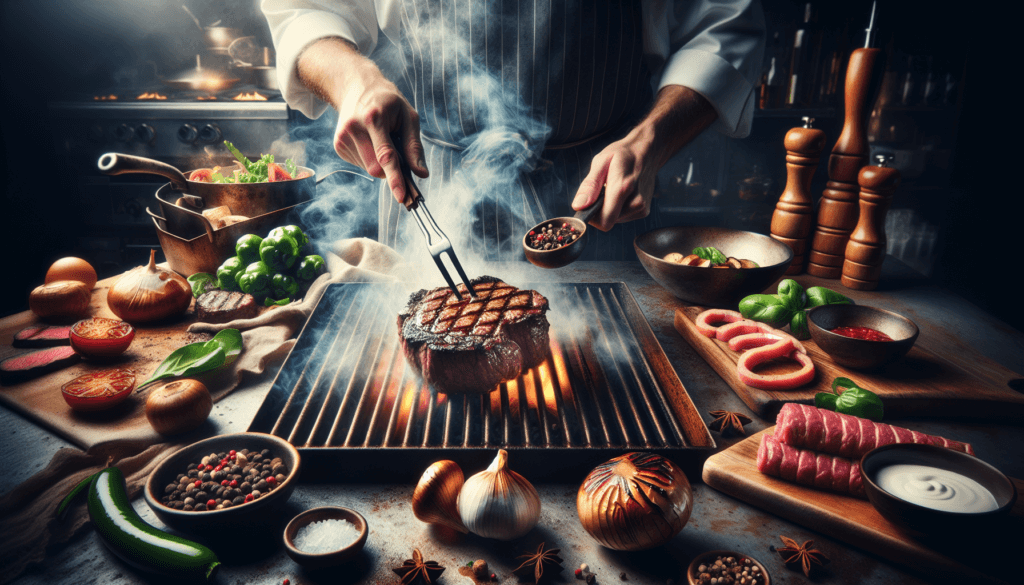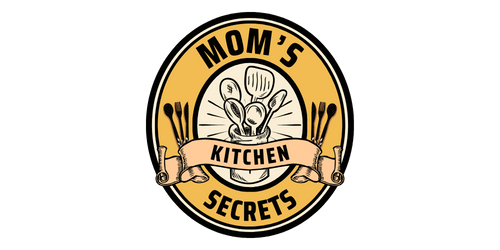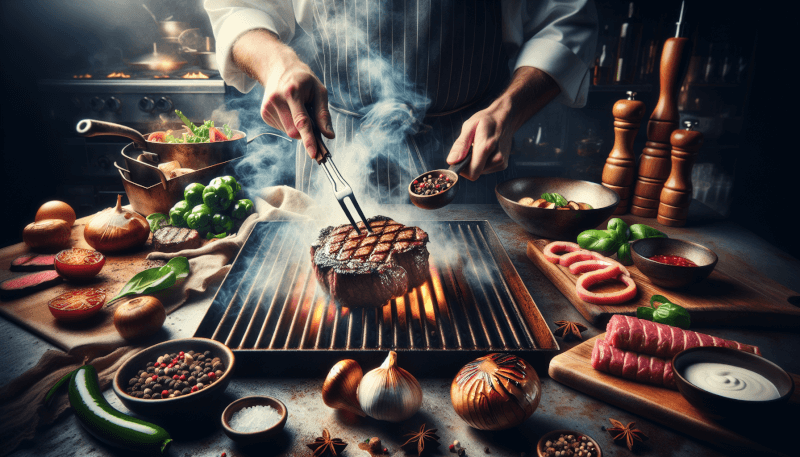If you’re a cooking enthusiast looking to up your game in the kitchen, you’ve come to the right place. In this article, we’ll explore the most popular cooking techniques that every aspiring chef should master. From sautéing to braising, grilling to roasting, these techniques will not only elevate your culinary skills but also enhance the flavors of your dishes. So get ready to embark on a flavorful journey where you’ll learn the art of creating delicious meals like a true culinary maestro.
Sauteing
Definition and Purpose
Sauteing is a popular cooking technique that involves quickly cooking food in a small amount of fat over high heat. The purpose of sauteing is to create deliciously flavorful dishes with a beautiful caramelized exterior and a tender interior. This cooking method is perfect for searing meats, sauteing vegetables, and even cooking delicate seafood.
Steps to Saute
Heat the pan: Start by preheating a wide, shallow pan over medium-high heat. It’s essential to use a pan that conducts heat evenly, such as stainless steel or cast iron.
Add the oil or butter: Once the pan is hot, add a small amount of oil or butter. You want enough fat to lightly coat the bottom of the pan.
Prepare the ingredients: Make sure your ingredients are cut into uniform sizes and that they are dry. Wet ingredients can cause splattering when they come into contact with hot oil.
Saute the ingredients: Place your ingredients in the hot pan and cook them quickly, stirring or tossing them frequently. The goal is to brown and cook the food evenly without burning it. This process usually takes a few minutes.
Season and serve: Once your ingredients are cooked to perfection, season them with salt, pepper, and any other desired herbs or spices. Serve immediately while they are still hot and flavorful.
Tips for Success
- Use a pan with a wide cooking surface area to ensure even heat distribution and quick cooking.
- Cut your ingredients into similar sizes so they cook evenly.
- Dry your ingredients before sauteing to prevent splatter and achieve a nice browning effect.
- Don’t overcrowd the pan; this can cause the ingredients to steam instead of saute.
- Keep the heat high and stir or toss the ingredients frequently to avoid burning.
- Season your sauteed food at the end to prevent the seasoning from burning and becoming bitter.
Grilling
Definition and Purpose
Grilling is a popular cooking technique that involves cooking food over an open flame or on a grill. The purpose of grilling is to impart a distinctive smoky flavor and create a caramelized exterior while maintaining the food’s moisture and tenderness. Grilling is often associated with cooking meats, but it’s also a fantastic method for grilling vegetables, fruits, and even seafood.
Types of Grilling
Direct Grilling: This method involves placing the food directly over the heat source and cooking it quickly. It is ideal for smaller cuts of meat or food that cooks in less than 20 minutes, such as burgers or chicken breasts.
Indirect Grilling: This method involves cooking the food next to, rather than directly over, the heat source. It’s perfect for larger cuts of meat that require longer cooking times, such as roasts or whole chickens. Indirect grilling allows for slow, even cooking without charring the exterior.
Tips for Success
- Preheat the grill to ensure even cooking and prevent sticking.
- Clean and oil the grill grates before cooking to prevent food from sticking.
- Marinate or season your food before grilling to enhance flavor.
- Use direct grilling for smaller and thinner cuts of meat, and indirect grilling for larger and thicker cuts.
- Flip your food only once to achieve an evenly cooked, caramelized exterior.
- Use a meat thermometer to ensure your meats are cooked to the desired internal temperature.
- Allow grilled meats to rest for a few minutes before serving to retain their juices.

Baking
Definition and Purpose
Baking is a versatile cooking technique that uses dry heat to cook food in an enclosed space, such as an oven. The purpose of baking is to cook the food thoroughly and evenly, creating dishes with a golden, crispy exterior and a moist interior. Baking is commonly used for baking bread, pastries, casseroles, and desserts.
Common Baked Dishes
Breads: Baking is the go-to method for making bread, including loaves, rolls, and bagels. The heat in the oven causes the dough to rise and develop a fluffy texture.
Pastries: From flaky pies to buttery croissants, baking is essential for creating delicious pastries. The high heat produces layers of light, golden crust.
Casseroles: Casseroles are often made by combining ingredients in a baking dish and then baking them until they are cooked through and the flavors meld together.
Desserts: Baking is a must for a wide range of desserts like cakes, cookies, brownies, and puddings. The oven helps these treats to rise, firm up, and turn into delectable delights.
Tips for Success
- Preheat the oven to the specified temperature to ensure proper cooking.
- Use the correct baking dish size as stated in the recipe to ensure even cooking and proper rising.
- Follow the recipe precisely, including the measurements of ingredients and cooking times.
- Rotate the baking dish halfway through cooking to ensure even browning.
- Use a toothpick or cake tester to check for doneness. It should come out clean or with a few moist crumbs attached.
- Allow baked goods to cool completely before removing them from the pan to avoid breaking or crumbling.
Roasting
Definition and Purpose
Roasting is a cooking technique that involves cooking food in an oven at a high temperature. The purpose of roasting is to create richly flavored dishes with a crispy exterior and tender interior. Roasting is commonly used for cooking large cuts of meat, whole poultry, vegetables, and even fruits.
Steps to Roast
Preheat the oven: Begin by preheating the oven to the desired temperature given in your recipe. Preheating is essential for even cooking.
Prepare the ingredients: Season your ingredients with herbs, spices, salt, and pepper. Optionally, drizzle with oil to enhance browning and help retain moisture.
Use a roasting pan: Place your ingredients in a roasting pan with enough space between them to allow hot air to circulate. You can also use a wire rack to elevate the food and allow excess fat to drain away.
Roast the ingredients: Place the pan in the preheated oven and cook your ingredients until they are golden brown and cooked through. The cooking time will depend on the specific dish and the desired level of doneness.
Rest and serve: Once your food is roasted to perfection, remove it from the oven and let it rest for a few minutes. This allows the flavors to settle and the juices to redistribute. Serve hot and enjoy!
Tips for Success
- Preheating the oven ensures proper cooking and browning.
- Use a meat thermometer to check for the doneness of meats.
- Season your ingredients generously to enhance flavor.
- Leave enough space between the ingredients in the roasting pan for even cooking and browning.
- Baste your ingredients with pan drippings or marinade during the roasting process for added moisture and flavor.
- Allow roasted meats to rest before carving to retain their juices.
- Remember to adjust cooking times for different cuts, sizes, and types of ingredients.
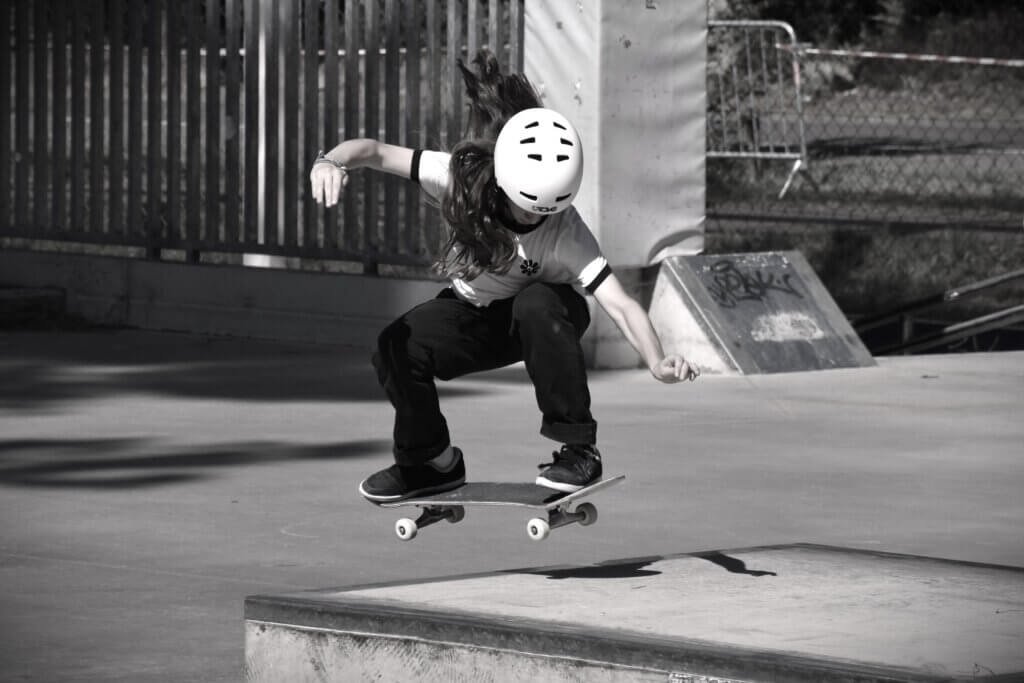
Boiling
Definition and Purpose
Boiling is a cooking technique that involves heating a liquid, usually water, until it reaches its boiling point and forms bubbles. The purpose of boiling is to cook food quickly and evenly by using the heat from the boiling liquid. Boiling is commonly used for cooking pasta, rice, vegetables, and making broths and soups.
Steps to Boil
Fill a pot with water: Choose a pot that is large enough to hold the ingredients comfortably. Fill it with enough water to cover the food completely.
Heat the pot: Place the pot on the stovetop over high heat and bring the water to a rolling boil. A rolling boil is when the bubbles are rapidly and vigorously breaking the surface of the water.
Add the ingredients: Gently lower the ingredients into the boiling water. Make sure they are fully submerged.
Cook the ingredients: Allow the food to cook in the boiling water for the specified amount of time or until your desired level of doneness is achieved.
Drain and serve: Once the food is cooked, carefully drain the water using a colander or slotted spoon. Serve the boiled food immediately while it is hot.
Tips for Success
- Use a pot with a tight-fitting lid to speed up the boiling process and prevent evaporation.
- Salt the water before boiling to enhance the flavor of the food.
- Cut larger ingredients into smaller, uniform sizes to ensure even cooking.
- Don’t overcrowd the pot; each ingredient should have enough space to cook properly.
- Keep an eye on the boiling water to prevent it from boiling over or evaporating completely.
- Test for doneness by piercing the food with a fork or tasting it for the desired texture.
- Save the boiled liquid or “stock” to use as a base for soups, sauces, or gravies.
Steaming
Definition and Purpose
Steaming is a cooking technique that involves cooking food using the steam from boiling water. The purpose of steaming is to cook food gently and retain its nutrients, flavors, and textures. Steaming is widely used for cooking vegetables, seafood, dumplings, and even desserts.
Steps to Steam
Prepare the steamer: Fill a pot with a few inches of water, and bring it to a simmer. Place a steamer basket or a heatproof colander over the pot, ensuring it does not touch the water.
Prepare the ingredients: Clean and slice your ingredients into appropriate sizes. Arrange them in a single layer on the steamer basket, leaving some space around each piece for the steam to circulate.
Steam the ingredients: Place the steamer basket over the simmering water, making sure it is covered tightly. Steam the food until it reaches the desired level of doneness. The cooking time will vary based on the ingredients and their size.
Serve and enjoy: Once the food is steamed to perfection, remove it from the steamer and serve immediately. Steamed food is delicious on its own or can be seasoned with sauces or dressings.
Tips for Success
- Use a pot or pan with a tight-fitting lid to trap the steam and cook the food efficiently.
- Don’t let the water touch the food; the steam should do the cooking.
- Arrange the food in a single layer, leaving enough space for the steam to circulate.
- Keep an eye on the water level in the pot to prevent it from evaporating completely.
- Test for doneness by piercing the food with a fork or tasting it for the desired tenderness.
- Be cautious when removing the steamer basket as it will be hot.
- Rinse the steamer basket immediately after use to prevent food from sticking.

Braising
Definition and Purpose
Braising is a cooking technique that involves cooking food slowly in a small amount of liquid, usually in a covered pot or Dutch oven. The purpose of braising is to tenderize tougher cuts of meat and create flavorful dishes with rich, succulent flavors. Braising is commonly used for cooking stews, pot roasts, and other slow-cooked dishes.
Steps to Braise
Preheat the pot: Start by preheating a heavy-bottomed pot or Dutch oven over medium heat. Adding the ingredients to a hot pot ensures a nice sear and caramelization.
Sear the ingredients: Season the meat or vegetables with salt and pepper and sear them in the hot pot until they develop a golden-brown crust. This step adds depth of flavor to the dish.
Add liquid and aromatics: Pour in enough liquid, such as broth, wine, or sauce, to cover about one-third of the ingredients. Add aromatic ingredients like onions, garlic, herbs, and spices to enhance the flavors.
Simmer and cook: Bring the liquid to a simmer, then reduce the heat to low. Cover the pot with a lid and let the dish cook slowly for a long time, allowing the flavors to meld and the meat to become tender. The cooking time will vary depending on the specific dish.
Serve and enjoy: Once the braised dish is cooked to perfection, remove it from the heat and let it rest for a few minutes. Serve it hot with the tender, flavorful ingredients and some of the braising liquid.
Tips for Success
- Choose cuts of meat that are suitable for braising, such as chuck roast, brisket, or short ribs.
- Sear the meat or vegetables before adding the liquid to enhance flavor and create a beautiful crust.
- Select aromatic ingredients that complement the dish and enhance the overall flavors.
- Use enough liquid to cover about one-third of the ingredients; this will prevent them from drying out during cooking.
- Cook the dish on low heat to allow the flavors to develop and the meat to become tender.
- Skim off any excess fat or impurities that rise to the surface during cooking for a cleaner taste.
- Braise dishes can be even tastier when reheated, as the flavors have had more time to meld.
Frying
Definition and Purpose
Frying is a cooking technique that involves cooking food in hot fat or oil. The purpose of frying is to create dishes with a crispy, golden exterior and a moist, tender interior. Frying is commonly used for cooking foods like French fries, fried chicken, fritters, and doughnuts.
Types of Frying
Deep Frying: This cooking method involves immersing entire pieces of food into hot oil. It results in a crispy exterior and requires a deep fryer or a deep pot with enough oil to submerge the food completely.
Pan Frying: Pan frying involves cooking food in a shallow layer of oil in a skillet or frying pan. It requires less oil than deep frying while still achieving a crispy exterior.
Stir-Frying: Stir-frying is a rapid cooking method that involves cooking small, bite-sized ingredients in a small amount of hot oil over high heat. It is commonly used in Asian cuisine to create quick, flavorful dishes.
Tips for Success
- Use oil with a high smoke point, such as canola or peanut oil, to prevent it from breaking down or producing a burnt taste.
- Heat the oil to the correct temperature before adding the food; this ensures the food cooks properly without absorbing excess oil.
- Dry the food thoroughly before frying to prevent it from splattering or creating steam that affects the crispiness.
- Fry in small batches to avoid overcrowding the pan, which can lower the temperature and result in greasy food.
- Use a slotted spoon or tongs to carefully flip or remove the food from the oil to prevent burns.
- Drain the fried food on a paper towel to remove excess oil.
- Season the fried food with salt or spices immediately after they come out of the oil to enhance the flavors.
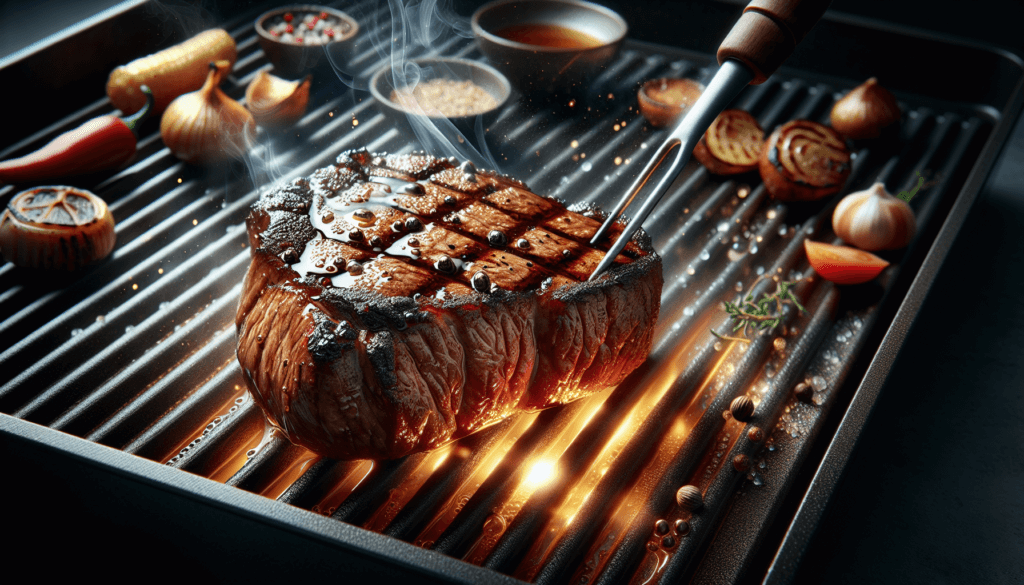
Poaching
Definition and Purpose
Poaching is a gentle cooking technique that involves cooking food in a simmering liquid. The purpose of poaching is to cook delicate ingredients while retaining their shape, tenderness, and natural flavors. Poaching is commonly used for cooking eggs, fish, chicken breasts, and fruits.
Steps to Poach
Prepare the poaching liquid: Choose a liquid that complements the ingredients, such as water, broth, wine, or milk. Add aromatic ingredients like herbs, spices, and vegetables to infuse flavor.
Heat the poaching liquid: Place the liquid in a pot and heat it until it reaches a gentle simmer. Avoid letting it come to a full boil to ensure the delicate ingredients are not overcooked.
Add the ingredients: Gently lower the ingredients into the poaching liquid. It should be enough to fully submerge them.
Cook the ingredients: Allow the ingredients to cook in the simmering liquid until they reach the desired level of doneness. The cooking time will depend on the specific ingredients and their size.
Remove and serve: Once the ingredients are poached to perfection, carefully remove them from the liquid using a slotted spoon or tongs. Serve them immediately while they are still hot and tender.
Tips for Success
- Choose a poaching liquid that complements the flavors of the ingredients.
- Keep the poaching liquid at a gentle simmer, avoiding a rolling boil.
- Monitor the cooking time closely to ensure the ingredients are cooked to the desired level.
- To ensure even cooking, use ingredients that are similar in size.
- Avoid stirring or agitating the ingredients during cooking to prevent them from breaking apart.
- For poached eggs, adding a little vinegar to the poaching liquid helps set the whites faster.
- The poaching liquid can be strained and reduced to create a flavorful sauce for the poached ingredients.
Blanching
Definition and Purpose
Blanching is a cooking technique that involves briefly immersing food in boiling water, followed by shocking it in ice water. The purpose of blanching is to partially cook the food, set its color, remove any impurities, and prepare it for further cooking or preservation. Blanching is commonly used for vegetables, fruits, shellfish, and nuts.
Steps to Blanch
Boil the water: Fill a large pot with water and bring it to a rolling boil. You want enough water to fully submerge the food.
Prepare the ice bath: While the water is boiling, fill a large bowl with ice and water to create an ice bath. This will stop the cooking process and help retain the food’s vibrant color.
Blanch the food: Gently lower the food into the boiling water and cook it for a short period, usually 1-3 minutes, depending on the specific ingredient.
Shock in ice water: Using a slotted spoon or tongs, remove the blanched food from the boiling water and immediately transfer it to the ice bath. Let it sit in the ice water for the same amount of time it was boiled.
Drain and use: Once blanched and shocked, remove the food from the ice bath and pat it dry. Use it immediately in your recipe or store it properly for later use.
Tips for Success
- Use a large pot of boiling water to ensure the food is fully submerged and cooked evenly.
- Prepare the ice bath in advance to immediately stop the cooking process.
- Blanch in small batches to avoid overcrowding the pot and to ensure even cooking.
- Follow the recommended blanching time for each specific ingredient to achieve the desired texture.
- Shocking the blanched food in ice water helps preserve its vibrant color and crispness.
- Use a timer to ensure that you blanch and shock the food for the correct amount of time.
- Properly store blanched food to maintain its quality and freshness.
In conclusion, mastering these popular cooking techniques will greatly enhance your culinary skills. Sauteing, grilling, baking, roasting, boiling, steaming, braising, frying, poaching, and blanching offer a wide range of options when it comes to preparing delicious meals. Whether you’re aiming for a crispy exterior or a tender, flavorful interior, these techniques will help you achieve the desired results. Plus, with the helpful tips provided, you’ll have the knowledge and confidence to execute each technique with success. So, dive into the world of cooking and start experimenting with these techniques to become a culinary pro in your own kitchen!
